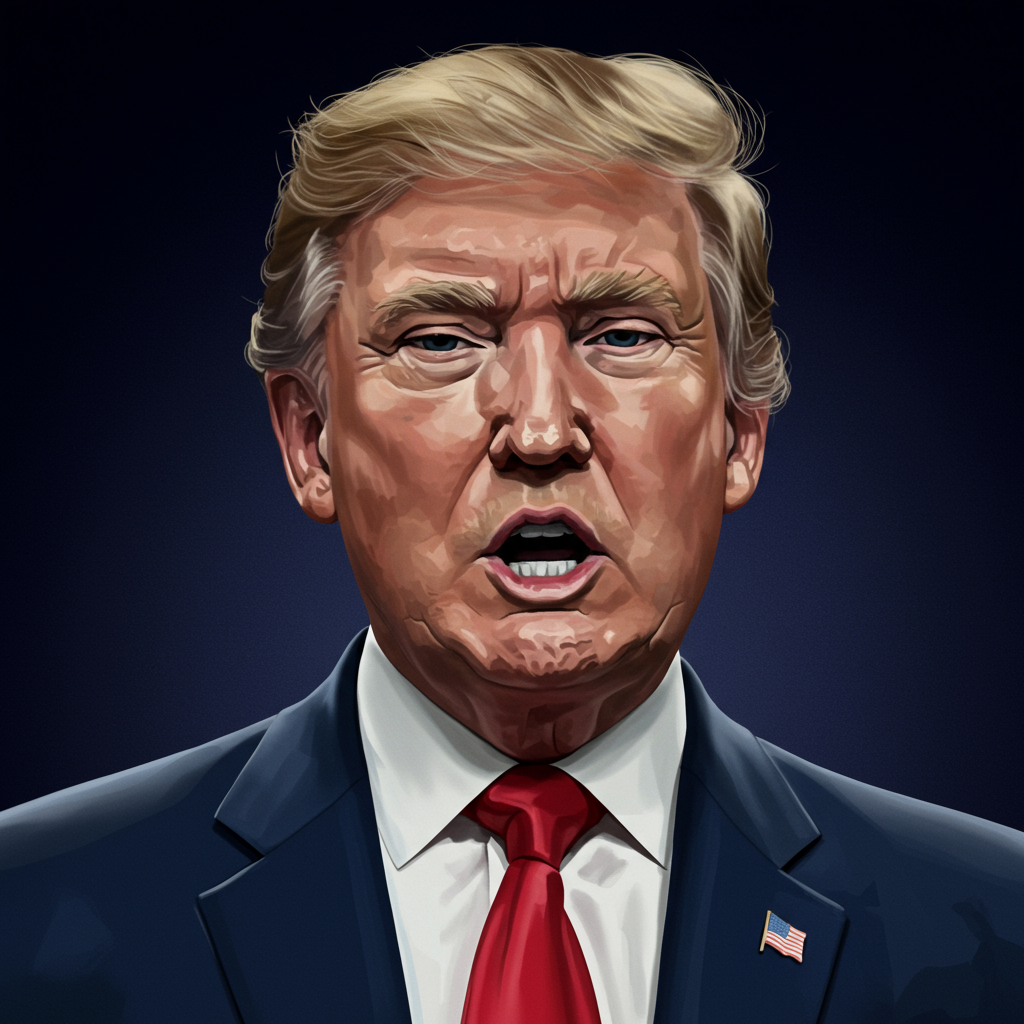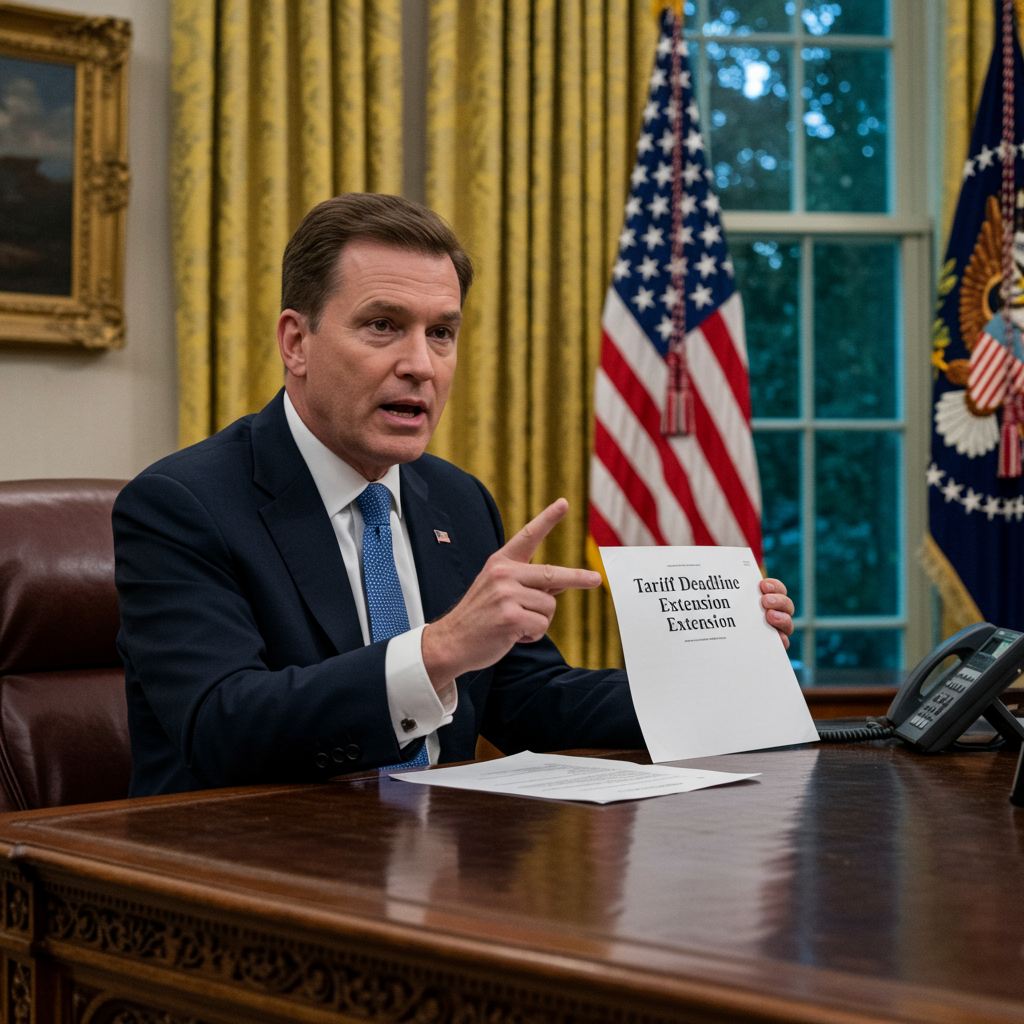Former President Donald Trump has initiated a high-stakes legal battle, filing a substantial $10 billion defamation lawsuit against The Wall Street Journal and its powerful owner, Rupert Murdoch. This significant legal action stems from a recent article published by the newspaper, which reported on alleged ties between Trump and the late, disgraced financier Jeffrey Epstein. The controversy centers on a purported “sexually suggestive letter” claimed to bear Trump’s name and included in a 2003 birthday album for Epstein.
Trump vehemently denies authorship of the letter, labeling the Wall Street Journal’s story as “false, malicious, and defamatory.” This lawsuit, filed in federal court in Miami, represents Trump’s latest move in his ongoing campaign against what he terms “Fake News Media.” It underscores the enduring political sensitivity surrounding Jeffrey Epstein and his network, particularly among Trump’s core supporters.
Trump’s High-Stakes Defamation Claim
The lawsuit, lodged on Friday, July 19, 2025, names not only The Wall Street Journal and Rupert Murdoch but also its parent company, Dow Jones, NewsCorp CEO Robert Thomson, and the specific reporters involved. Trump’s legal team asserts that the publication acted with clear malicious intent, causing him severe financial and reputational damage. The former president’s complaint alleges that the newspaper “knowingly and recklessly” published “numerous false, defamatory, and disparaging statements.” This legal challenge highlights a pattern of aggressive litigation from Trump against media organizations he believes have unfairly targeted him.
In a statement posted on his Truth Social platform, Trump framed the lawsuit as a broader stand for “ALL Americans who will no longer tolerate the abusive wrongdoings of the Fake News Media.” He also expressed a public desire for Rupert Murdoch to testify under oath, anticipating a contentious legal process. Dow Jones, the Journal’s publisher, swiftly responded to the allegations, declaring full confidence in “the rigor and accuracy of our reporting” and vowing to “vigorously defend against any lawsuit.”
The Contested Epstein Birthday Letter
At the heart of the defamation claim is a Wall Street Journal report from July 18, 2025. This article detailed a letter allegedly sent to Jeffrey Epstein for his 50th birthday in 2003. According to the newspaper, the letter was sexually suggestive, featuring typewritten text framed by the outline of what appeared to be a hand-drawn naked woman. The text reportedly described an imaginary third-person conversation between Trump and Epstein, with phrases like, “Yes, there is, but I won’t tell you what it is,” and “We have certain things in common, Jeffrey.” The alleged note concluded with: “Happy Birthday — and may every day be another wonderful secret,” signed “Donald.”
Trump adamantly denies writing or signing this letter. He stated publicly, “These are not my words, not the way I talk. Also, I don’t draw pictures.” He further claimed that he personally informed both Rupert Murdoch and the Journal’s top editor, Emma Tucker, that the alleged letter was “fake” before its publication, warning them of potential legal action. The lawsuit itself takes issue with the Journal’s failure to provide tangible evidence, asserting that the defendants “failed to attach the letter, failed to attach the alleged drawing, failed to show proof that President Trump authored or signed any such letter, and failed to explain how this purported letter was obtained.” Trump’s legal team concludes that “no authentic letter or drawing exists.”
DOJ’s Move to Unseal Epstein Grand Jury Transcripts
The timing of Trump’s lawsuit coincides with a separate, yet related, development involving his administration’s Justice Department. On the same day the lawsuit was filed, Deputy Attorney General Todd Blanche requested a federal court in New York to unseal grand jury transcripts related to Epstein’s sex trafficking case. This move also includes a request to unseal documents from the case against Epstein’s associate, Ghislaine Maxwell, who was convicted of luring underage girls for Epstein’s abuse.
This request by the Justice Department came shortly after a significant backlash erupted from Trump’s loyal base. Many of his ardent supporters had expressed deep disappointment and anger after the administration previously announced it would not be releasing additional Epstein files, despite earlier pledges. This reversal created a “major fissure” between Trump and his supporters, with some vocal allies publicly questioning why the documents were not being made public and even calling for Attorney General Pam Bondi’s resignation. Bondi had previously hyped the expected release, promising “major revelations” and “a lot of names.”
Navigating Transparency and Confidentiality
The Justice Department’s renewed push for transparency aims to mitigate the “firestorm” caused by the earlier decision. Deputy Attorney General Blanche emphasized the department’s commitment to releasing the transcripts while also protecting victims, stating, “Transparency in this process will not be at the expense of our obligation under the law to protect victims.” Prosecutors in New York will work to redact victim-related and other personally identifying information before any public release.
Grand jury materials are typically confidential, protected by law to safeguard informants and identities. However, a judge holds the discretion to unseal documents if the public interest significantly outweighs the need for legal protections. The process for releasing these transcripts is expected to be lengthy, requiring a judge’s approval and meticulous redactions. While this signifies a new effort to bring transparency to the Epstein case, the administration has not indicated plans to release other evidence it possesses, focusing solely on the grand jury transcripts. The enduring public fascination and numerous conspiracy theories surrounding Epstein’s death in jail in 2019 continue to fuel demands for full disclosure.
Political Repercussions and Media Strategy
Trump’s legal challenge against The Wall Street Journal is consistent with his broader strategy of confronting media outlets he perceives as biased or unfair. He has previously secured multimillion-dollar settlement deals from other news organizations, including ABC and CBS, after taking them to court. This pattern suggests a calculated approach to leverage legal action to exert pressure on the media landscape.
The ongoing Epstein controversy, amplified by the Wall Street Journal article and the Justice Department’s shifting stance, has placed Trump on the defensive. The discontent among his base highlights the intense focus many of his supporters have on the Epstein case and their desire for complete transparency. Some high-profile Republicans, including Vice President JD Vance, have also weighed in, questioning the letter’s authenticity and the Journal’s reporting, despite some having previously called for the release of “Epstein list” information. This dual front — a personal lawsuit and a government-led push for document release — underscores the complex and politically charged nature of the Epstein saga for the former president.
Frequently Asked Questions
What specific claims did The Wall Street Journal article make about Donald Trump and Jeffrey Epstein?
The Wall Street Journal article, published on July 18, 2025, claimed that a “sexually suggestive letter” bearing Donald Trump’s name was included in a 2003 album compiled for Jeffrey Epstein’s 50th birthday. According to the newspaper, the letter’s text was framed by the outline of a hand-drawn naked woman and contained an imaginary third-person conversation between Trump and Epstein. It reportedly concluded with the phrase, “Happy Birthday — and may every day be another wonderful secret,” signed “Donald.”
Why is the Justice Department now seeking to unseal Jeffrey Epstein’s grand jury transcripts?
The Justice Department, under President Trump’s administration, has moved to unseal grand jury transcripts in Epstein’s sex trafficking case, as well as those related to Ghislaine Maxwell. This action came after significant public backlash and a “major fissure” within Trump’s loyal base. The controversy arose because the administration had previously reversed earlier pledges to release more Epstein-related files, leading to widespread calls for greater transparency. The DOJ seeks to mitigate this “firestorm” while carefully redacting sensitive victim information.
How has Donald Trump justified his decision to sue The Wall Street Journal and Rupert Murdoch?
Donald Trump has justified his $10 billion defamation lawsuit by alleging that The Wall Street Journal and Rupert Murdoch “knowingly and recklessly” published “false, malicious, and defamatory statements.” He claims the story about the alleged birthday letter to Jeffrey Epstein caused him “overwhelming financial and reputational harm.” Trump also frames the lawsuit as part of a broader effort to fight against what he calls “Fake News Media,” citing past successful settlements with other news outlets as precedent for his legal actions.
The ongoing legal confrontation between Donald Trump and the Wall Street Journal, coupled with the Justice Department’s efforts regarding the Epstein files, highlights a multifaceted battle over reputation, truth, and transparency. As the legal proceedings unfold in Miami and New York, the public will be closely watching for any new revelations in a case that continues to resonate deeply within political and media landscapes. These developments underscore the persistent scrutiny surrounding Jeffrey Epstein’s connections and the enduring impact of his illicit activities.



